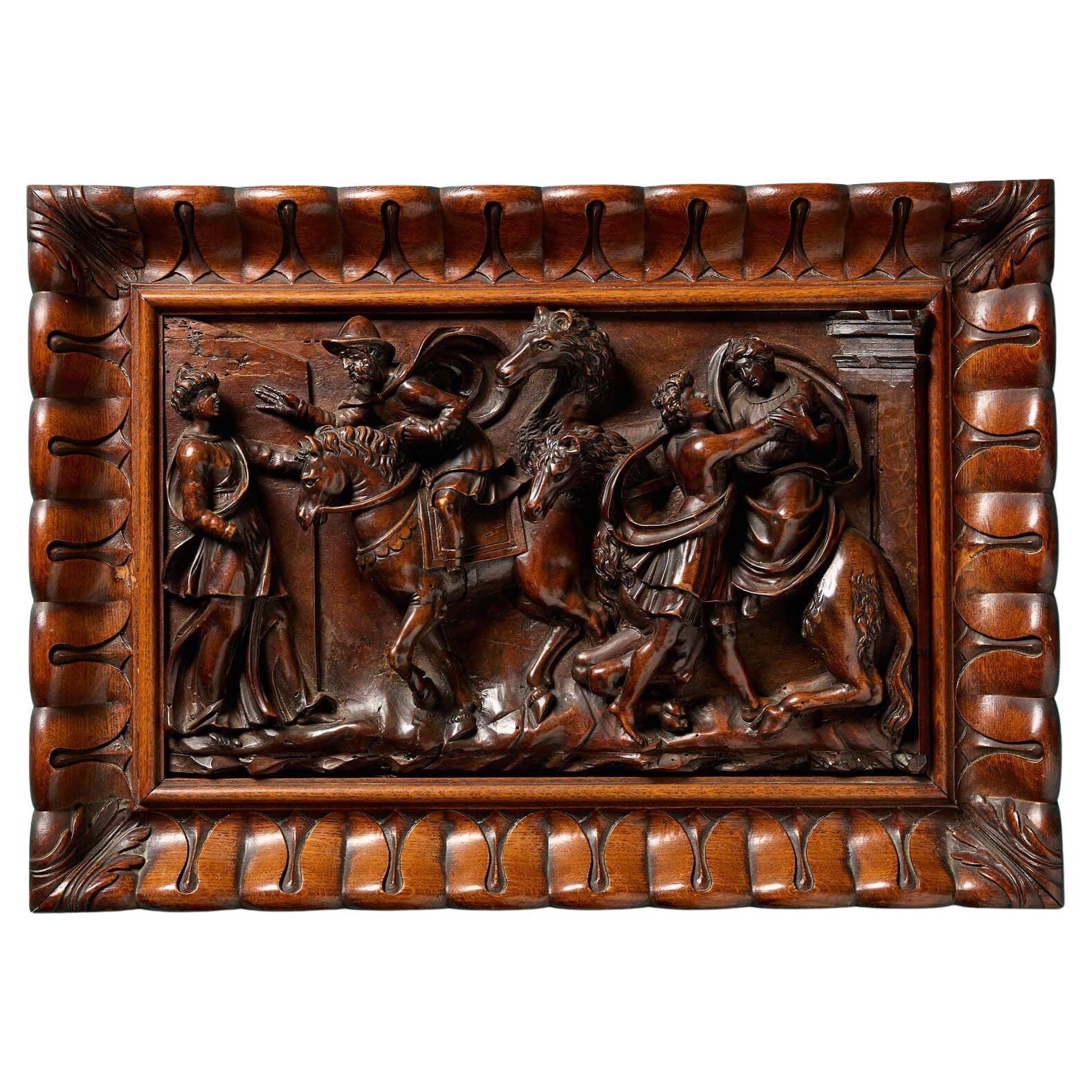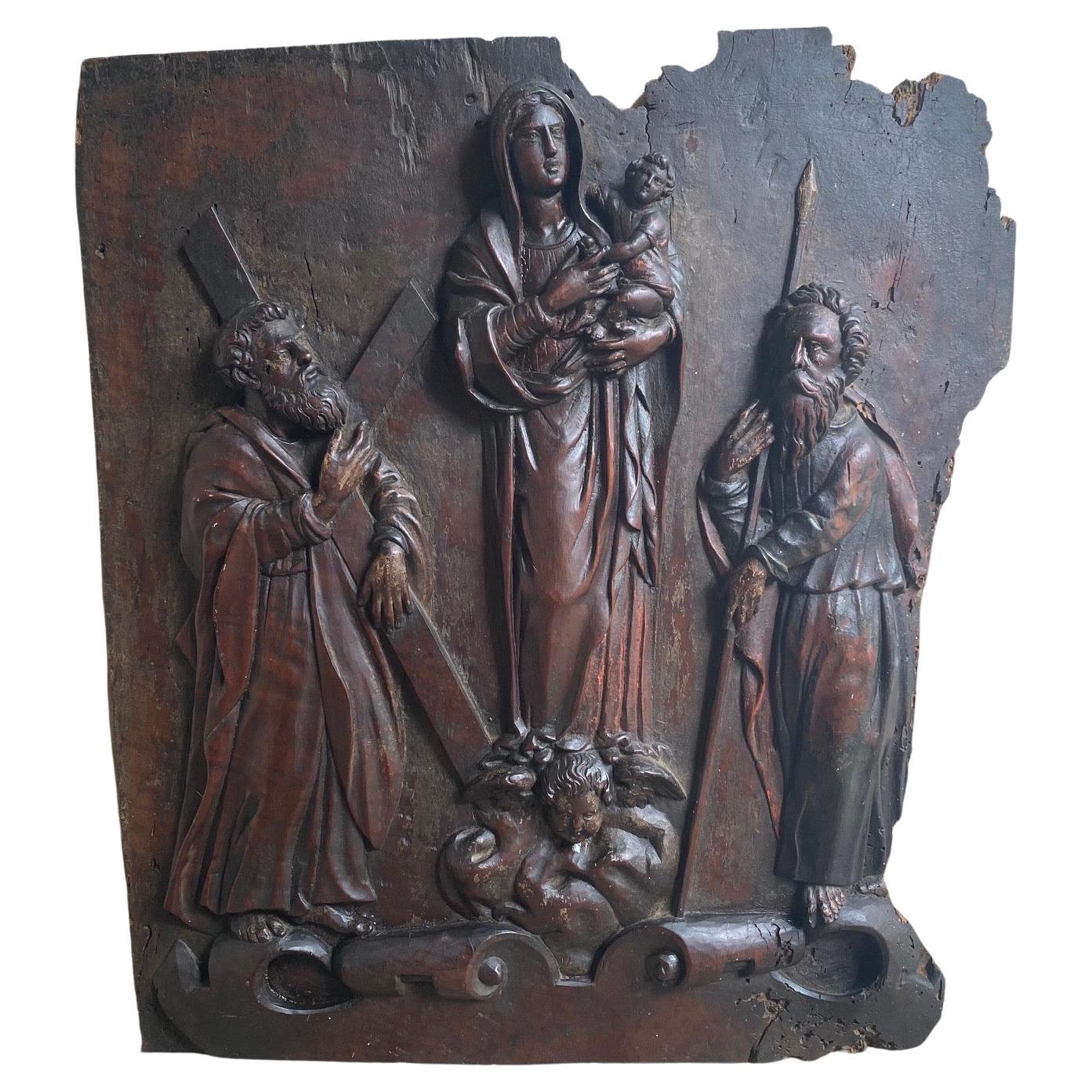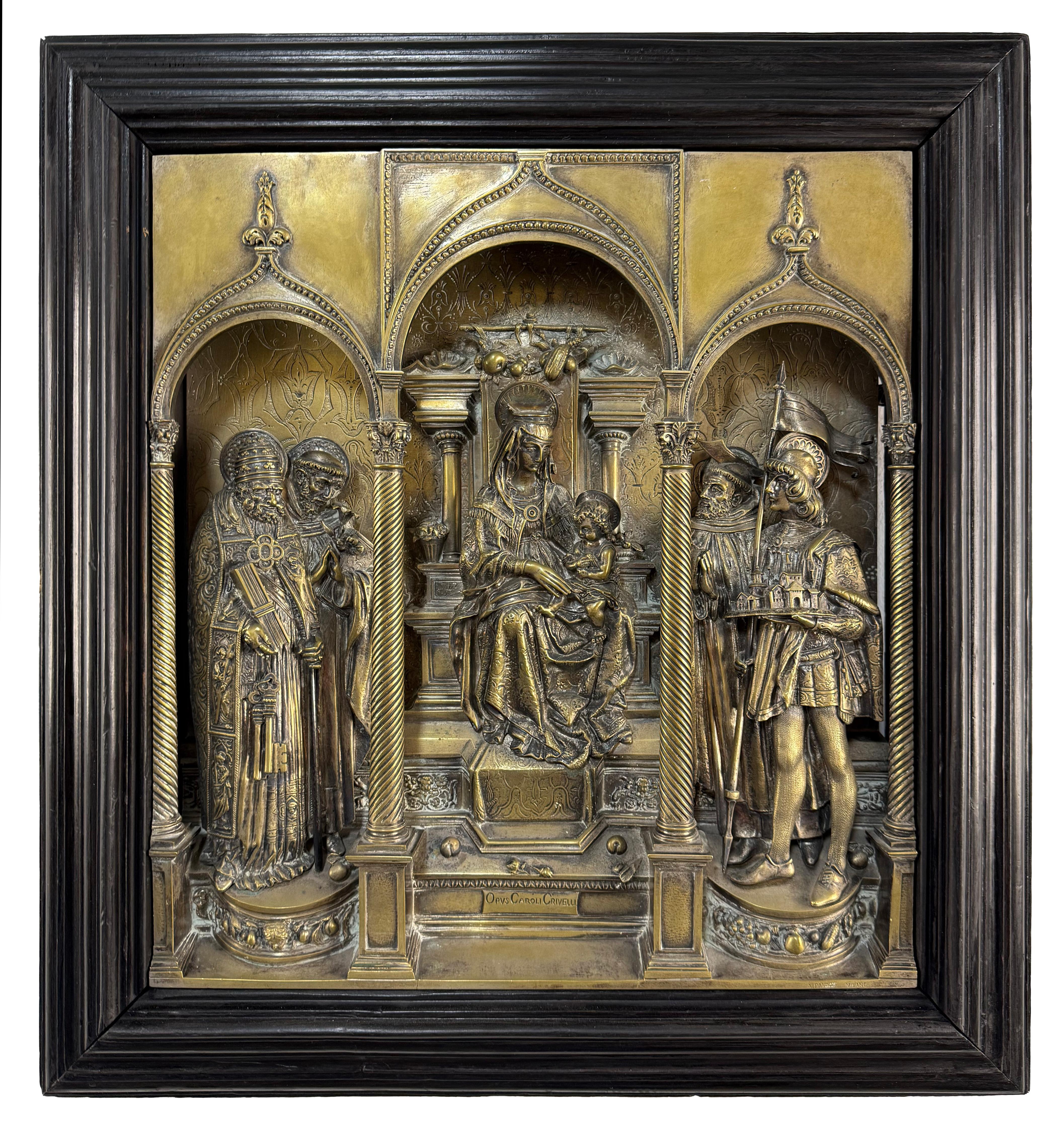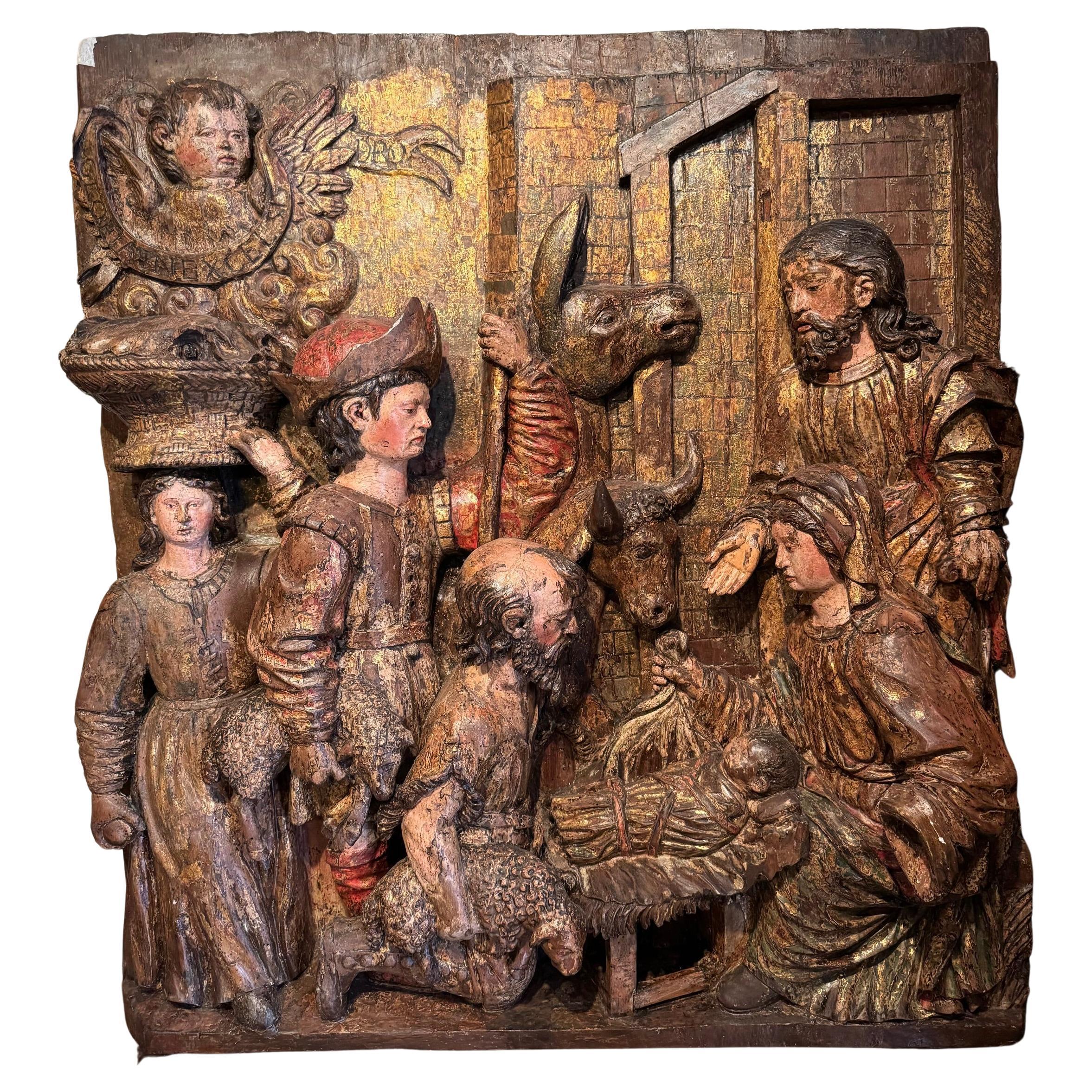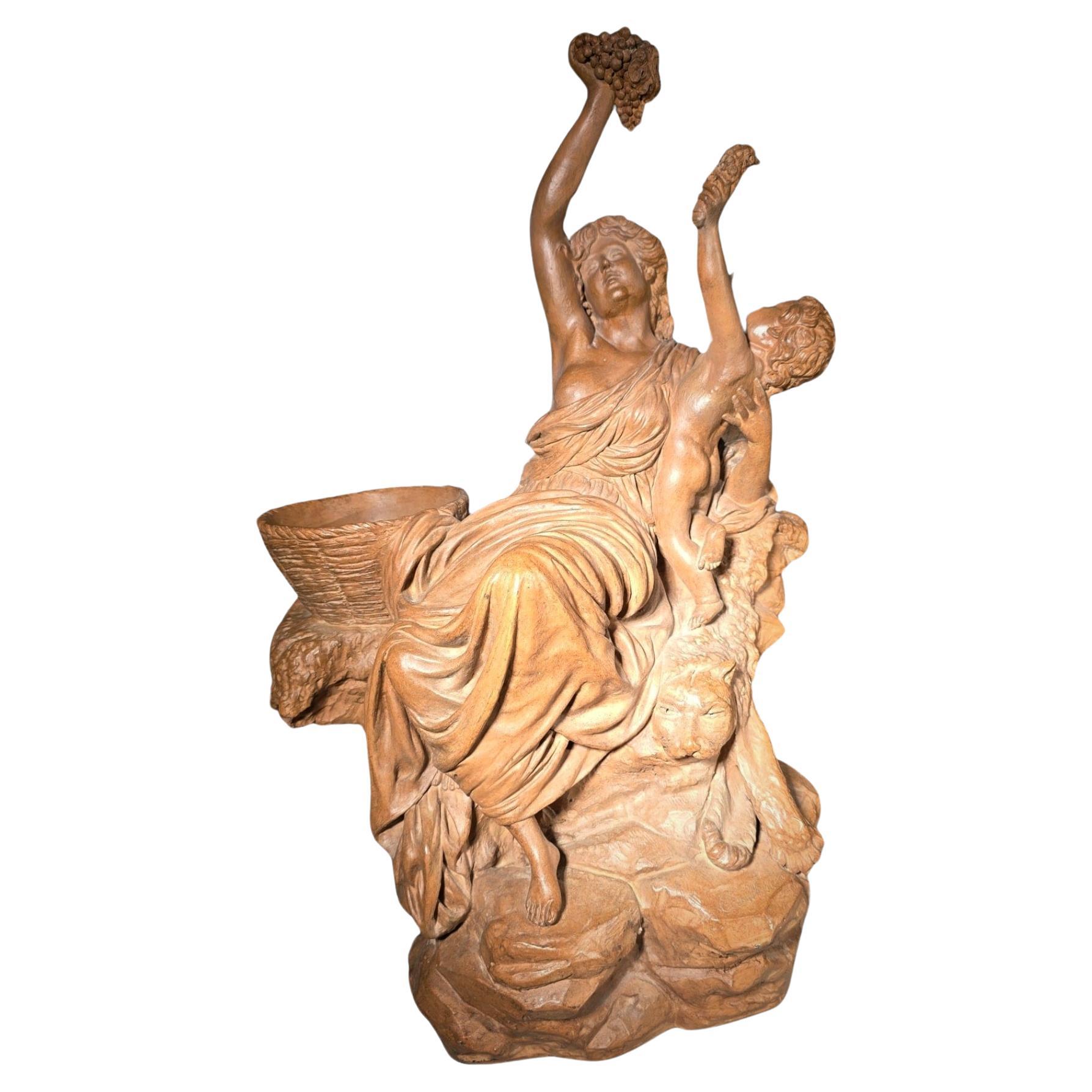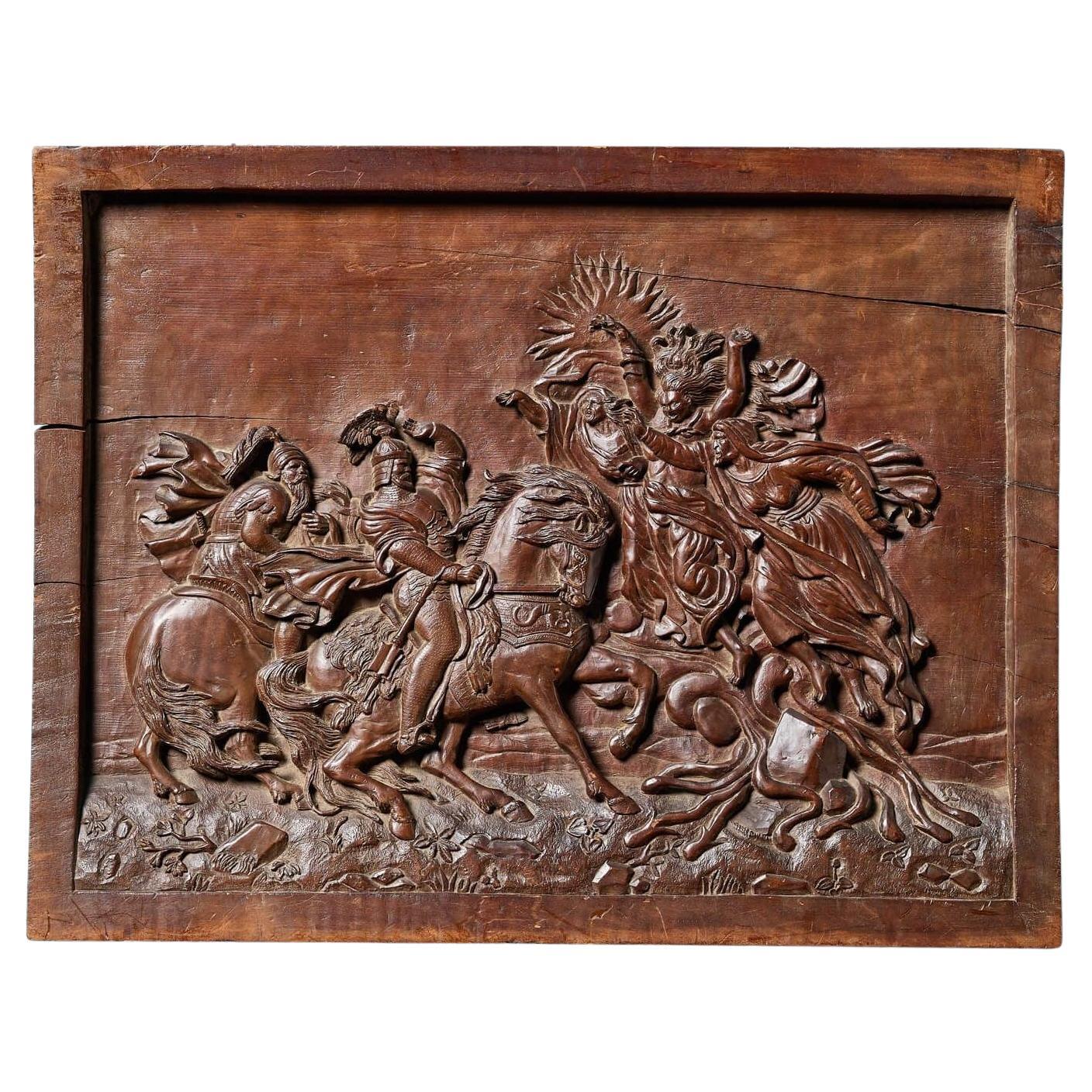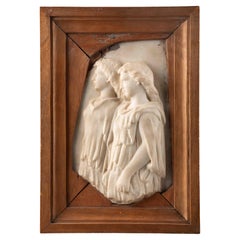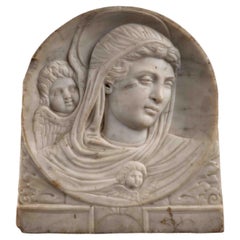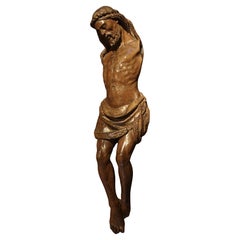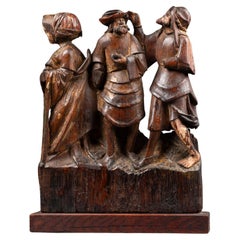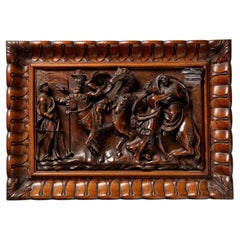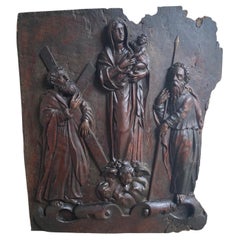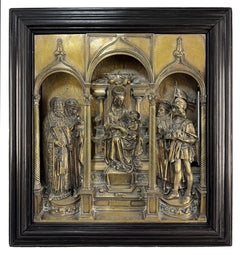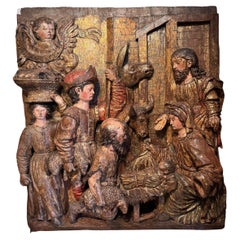Items Similar to Large Terracotta Relief - Lombardy, First Half of 17th Century
Want more images or videos?
Request additional images or videos from the seller
1 of 7
Large Terracotta Relief - Lombardy, First Half of 17th Century
$61,764.41
$77,205.5120% Off
£46,041.10
£57,551.3820% Off
€52,000
€65,00020% Off
CA$86,090.94
CA$107,613.6720% Off
A$93,566.04
A$116,957.5520% Off
CHF 49,445.99
CHF 61,807.4920% Off
MX$1,131,947.10
MX$1,414,933.8820% Off
NOK 615,814.62
NOK 769,768.2720% Off
SEK 581,675.21
SEK 727,094.0120% Off
DKK 396,003.61
DKK 495,004.5220% Off
About the Item
Large Terracotta relief of the flight into Egypt
Lombardy, first half of 17th century
Painted terracotta
91 x 85 x 11,5 cm
This event in the early life of Christ is recounted in the Gospel of Saint Matthew (2: 13-15). Joseph was warned in a dream that Herod was intent on killing the child Jesus and so he took Mary and the baby to Egypt for safety. This episode, both poignant and hopeful, has been portrayed many times.
The artist does not deviate from traditional iconography: Maria seated in a frontal position carrying the Child occupies the central position; the Angel assist in guiding the Holy Family and Joseph, behind the donkey closes the composition; the procession is followed by angels between the clouds. The palm tree, symbol of fertility in Egypt, is the miracle tree of the desert regions.
The baby Jesus is represented as a newborn baby carried in the arms of his mother. Unlike other episodes in the Childhood cycle, where Jesus is shown as an active subject; here, on the contrary, it is represented as a designated target and becomes an object in relation to the forces which surround it.
The main couple is the Virgin and the Child and the asymmetry is total between the four protagonists of the Flight: Mary represents the triumphant aspect of the episode, Joseph its share of humility and obedience; one is covered with noble linens, the other with rustic rags; in a frontal position and in motion on the donkey's back, Marie and the Child share a fusional relationship.
It is interesting that the artist chose to represent Maria with the Child almost in the round; Joseph, in profile is also carved in very strong relief, his head completely detached from the background while for the Angel, the palm tree and the clouds, the artist has chosen a more delicate relief. The backgrounds are treated in antique relief and the foreground figures, almost detached, in the round.
The theme of flight, both religious and universal, is an empathetic subject capable of arousing feelings of pity among the faithful.
This large high relief shows affinities in style and in composition with the Flight into Egypt sculpted by Gian Andrea Biffi for the apse of the Duomo in Milan, of which exist a terracotta version listed by Federico Zeri.
We find in both works a balanced and solemn composition, where emotions are controlled and the objective is to highlight reason instead of senses. Imbued with the Mannerist ideal of grace, these works are marked by the subtle penetration of the ancient world, reproposed as nostalgia for solemn beauty.
This trend reflects the political situation in the north of the country and more generally in the entire peninsula. The Milanese and Lombard scene of the second half of the 16th century and the beginning of the 17th century must be analyzed taking into account the particular position of the city: if for the Spanish Empire it represented a strategic military outpost, it was at the center of the conflict between the Catholic Church and the Reformed Church. As a result, the greatest contribution has been given by religious art in the face of an inferior civil artistic and architectural production.
By the last decades of the 16th century the refined, courtly style known as Mannerism had ceased to be an effective means of expression, and its inadequacy for religious art was being increasingly felt in artistic circles. Renouncing the independence acquired by humanism, for its autonomous and purely aesthetic ends, art was reduced to its social and religious function. It was once again becoming a "committed" art, a means at the service of a cause.
The Roman Catholic Church after the Council of Trent (1545–63) adopted a propagandistic stance in which art was to serve as a means of extending and stimulating the public’s faith in the church. To this end the church adopted a conscious artistic program which was paradoxically both sensuous and spiritual; while a naturalistic treatment rendered the religious image more accessible to the average churchgoer.
The arts present an unusual diversity in the Baroque period, chiefly because currents of naturalism and classicism coexisted and intermingled with the typical Baroque style. The Church intended to restore her unity and the collective sense of the faithful through a tightening of discipline, which required a severe and sober style.
The classicized tendency that evolved from this program was characterized by simple and balanced compositions imbued by classical sobriety, more delicate in form and restrained in expression. This high relief is a rare example of the idealistic classicizing style which during the XVII century formed a counterpart for the more emotional and theatrical Baroques sculptures.
- Dimensions:Height: 35.83 in (91 cm)Width: 33.47 in (85 cm)Depth: 4.53 in (11.5 cm)
- Style:Baroque (Of the Period)
- Materials and Techniques:
- Place of Origin:
- Period:
- Date of Manufacture:17th Century
- Condition:Wear consistent with age and use.
- Seller Location:Bruxelles, BE
- Reference Number:1stDibs: LU6666234762262
About the Seller
5.0
Vetted Professional Seller
Every seller passes strict standards for authenticity and reliability
1stDibs seller since 2022
15 sales on 1stDibs
Typical response time: <1 hour
- ShippingRetrieving quote...Shipping from: Bruxelles, Belgium
- Return Policy
Authenticity Guarantee
In the unlikely event there’s an issue with an item’s authenticity, contact us within 1 year for a full refund. DetailsMoney-Back Guarantee
If your item is not as described, is damaged in transit, or does not arrive, contact us within 7 days for a full refund. Details24-Hour Cancellation
You have a 24-hour grace period in which to reconsider your purchase, with no questions asked.Vetted Professional Sellers
Our world-class sellers must adhere to strict standards for service and quality, maintaining the integrity of our listings.Price-Match Guarantee
If you find that a seller listed the same item for a lower price elsewhere, we’ll match it.Trusted Global Delivery
Our best-in-class carrier network provides specialized shipping options worldwide, including custom delivery.More From This Seller
View AllRenaissance relief - Italy, probably Rome, 16th century
Located in Bruxelles, BE
Renaissance relief depicting two female figures dressed in a chiton
Italy, probably Rome, 16th century
Marble, wooden frame (provenance label on the back)
28 x 20 x 5 cm
This beau...
Category
Antique 16th Century Italian Renaissance Wall-mounted Sculptures
Materials
Marble
Renaissance Marble Relief - Emilia Romagna, 1470-80
Located in Bruxelles, BE
Renaissance Marble Relief
Emilia Romagna, Faenza ? 1470-80
H 30,2 x L 33 x P 3,5 cm
The carved marble relief depicts the Virgin accompanied by a winge...
Category
Antique 15th Century and Earlier Italian Renaissance Figurative Sculptures
Materials
Marble
Christ - Umbria, second half of the 15th century
Located in Bruxelles, BE
Christ
Umbria, Orvieto?
Second half of the 15th century
77 x 16.5 cm
Category
Antique 15th Century and Earlier Italian Renaissance Figurative Sculptures
Materials
Walnut
$7,572 Sale Price
25% Off
Group of Altarpiece - Antwerpen, 16th century
Located in Bruxelles, BE
Group of altarpiece representing the life of a Saint, Saint Renualde?
Engraved by the sign of Antwerp hand on the hat of the central character
Carved oak, traces of polychromy
Fir...
Category
Antique 16th Century Belgian Renaissance Figurative Sculptures
Materials
Oak
$11,402 Sale Price
40% Off
Decorative Carved Panel - France, 19th Century
Located in Bruxelles, BE
Decorative Carved Panel
France, 19th Century
15,5 x L 30,5 x 3 cm
Carved in richly grained wood, this 19th-century decorative panel draws direct inspiration from Renaissance ornamen...
Category
Antique Early 19th Century French Renaissance Wall-mounted Sculptures
Materials
Wood
Cercle of Romano Alberti, Page, Around 1530-1540
Located in Bruxelles, BE
Cercle of Romano Alberti, dit Il Nero da Sansepolcro ( San Sepolcro, 1521-1568 )
Page
Mixed media : wood core, papier mâché, stucco, polychrome and gilded
Italy, around 1530-154...
Category
Antique 16th Century Italian Renaissance Figurative Sculptures
Materials
Stucco, Wood, Paper
$12,352 Sale Price
35% Off
You May Also Like
Carved 17th Century Decorative Renaissance Wall Panel
Located in Wormelow, Herefordshire
A superbly carved, early 17th century decorative Renaissance walnut wall panel mounted within a carved oak frame, sourced from a private UK collectio...
Category
Antique Early 17th Century Italian Renaissance Decorative Art
Materials
Wood, Oak
Powerful 18th Century Bas Relief Baroque Religious Plaque
Located in Hopewell, NJ
Carved from a single wooden solid plank of walnut, this stunning Italian bas relief plaque depicts Mary holding the baby Jesus, flanked by two apostles, one holding a sword; the othe...
Category
Antique 18th Century Italian Baroque Wall-mounted Sculptures
Materials
Walnut
Bronze San Domenico di Camerino Altarpiece
By Carlo Crivelli
Located in New York, NY
Representation of the San Domenico di Camerino Altarpiece, painted by Carlo Crivelli in 1482, and made by Antonio Pandiani in the 19th century.
Category
19th Century Renaissance Figurative Sculptures
Materials
Bronze
Adoration of the shepherds - Large high-relief, Northern Italy Circa 1500
Located in PARIS, FR
Large high relief in carved and gilt wood, with many traces of polychromy, representing the Adoration of the Shepherds.
The evangelist Luke first mentions that the scene takes place at night. A sudden light, which frightens the shepherds, signals the arrival of an angel who announces "great joy". He gives them a sign: they will find "a newborn baby wrapped...
Category
Antique 16th Century Italian Renaissance Figurative Sculptures
Materials
Wood
19th Century Italian Terracotta Sculpture
Located in Madrid, ES
This elegant 19th-century Italian terracotta sculpture is a remarkable work of art. Although the signature is illegible, it is authenticated and represents an allegory of autumn. The...
Category
Antique 1890s Figurative Sculptures
Materials
Terracotta
Antique Decorative Wall Panel Carved with Mythical Scene
Located in Wormelow, Herefordshire
An intricately carved 19th century antique wooden wall panel depicting a mythical or biblical scene. It details what appears to be three mythological beings, possibly witches or sorc...
Category
Antique Late 19th Century German Medieval Wall-mounted Sculptures
Materials
Wood, Boxwood
More Ways To Browse
First Century
Italian Art Antique Painted Religious
Jesus And Mary
Spanish Empire
Antique Baby Jesus
Terracotta Relief
17th Century Terracotta
Palm Angels Used
Bronze Angle
Cherub Cast Bronze
Drinking Sculptures
Fertility Sculptures
French Cherub Bronze Sculpture
Glass Skull
Italian Male Sculpture
Marble Satyr
Mexican Tree
Statue Of David
